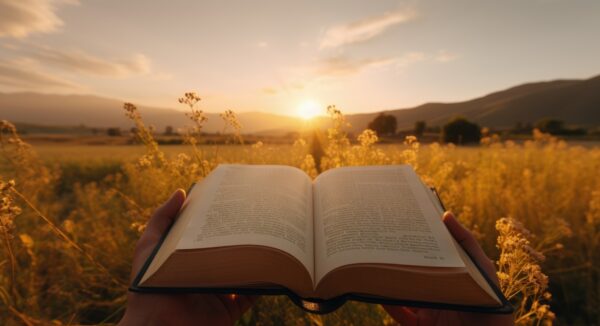If you are looking for a book to acquaint — or even reacquaint — you with the saints, “How Saints Die: 100 Stories of Hope” (Ignatius Press, $17.95) is a great place to get started. Author Father Antoni Maria Sicari is a Discalced Carmelite in Venice, Italy, who has a doctorate in theology with a licentiate in biblical studies. In this book, he writes 100d brief biographies of a wide variety of saints, including details about their deaths. He categorizes this book into eight different themes, which are each highlighted below with one of his featured saints.
1. Dying as martyrs
One of my favorite stories in this section included the Blessed Carmelite Martyrs of Compiegne, who died during the French Revolution at the end of the 18th century. Sixteen nuns were condemned to death at the guillotine at the “Toppled Throne Square.” When the crowd saw these nuns, they behaved respectfully, knowing that they were in a sacred presence. “The prioress got permission from the executioner to be the last to die, so that as mother she could assist and support all of her religious, especially the youngest,” writes Father Sicari. The nuns sang the Veni Creator Spiritus as they walked to their death. Today this scene is remembered in a novella, a play, an opera and even a film.
Want more Radiant? Sign up for our weekly newsletter!
2. Dying of love
St. Rita of Cascia lived from 1381-1457. Throughout her life, she lived out her vocation as a wife — to a violent husband, who she eventually converted — a mother and, after the death of her husband and loss of her sons, an Augustinian nun. It was her prayer that she would in some way resemble her crucified Lord. Her prayer was answered by a thorn being placed in her forehead. She suffered grave illness, and toward the end of her life, the only nourishment she said she needed came from the Eucharist. When she died, a strong perfume could be smelled coming from her body, which today is incorrupt and can be venerated at the Basilica of St. Rita in Cascia, Italy.
3. Dying of ecclesial passion
St. Catherine of Siena lived in the 14th century and did all she could to fight the schism in the Church. Even when it became difficult for her to walk, she made the trek to St. Peter’s Basilica every day to pray. When she entered the church, she would pause before the mosaic painted by Giotto, which portrayed the Gospel scene of the boat tossed by the stormy waves. She described it saying, “When it is the hour of terce, I rise from Mass, and you would see a dead woman go to Saint Peter’s. I enter anew to labor in the ship of the Holy Church.” One day during Lent, she collapsed in front of the image, and eight weeks later, she passed away saying, “The only cause of my death is my ardent love for the Church, which is consuming me.” Today she is considered a Patroness of Europe.
4. Dying of maternal charity
St. Jane Frances de Chantal lived in France from 1572-1641. She was a wife and mother, who was widowed around the young age of 29. Through spiritual guidance from St. Francis de Sales, they founded the Visitation Order. This order was unique because they were able to allow both the frail, sick and elderly to become sisters. It quickly grew in popularity, and Jane founded over 80 monasteries during her lifetime. When she sensed death was near, she requested that the story of St. Monica’s death be read to her. She died saying, “Yes, my Father, I am going. Jesus, Jesus, Jesus!”
5. Dying of paternal charity
St. Peter Claver was born in Catalonia, Spain, in 1580 and sent to a Jesuit boarding school. He received permission to go to Colombia as a missionary, where there was a port used for unloading and selling slaves. He had not yet been ordained a priest, but he vowed that he would “dedicate his whole life to the conversion of the blacks” and signed his name “Peter Claver, slave of the Ethiopians forever.” He carried this ministry on for four decades and baptized about 300,000 people. When the plague broke out in Colombia, he became ill and very weak. Toward the end of his life, he remained in his cell alone, very much forgotten until the city learned he had received last rites. When his body was displayed, he was laid out in cruciform. “He was proclaimed universal patron of missions among the Black populations,” writes Father Sicari.
6. Dying of apostolic toil
St. Leopold Mandic lived from 1866-1942 and is known as a saintly confessor. He was born in Dalmatia, which is now part of Croatia. He was a frail and small boy but was accepted into the Capuchin seminary at the age of 16. He was sent to Padua, Italy, in 1906 where he would become known for spending 10-15 hours a day in the confessional. Those who came to him for confession “found in him the sweetness and at the same time the firmness of Jesus.” He suffered greatly as his hands were malformed by arthritis and he had a tumor on his esophagus. “His greatest sufferings — which stayed with him even on his deathbed — were due to the fact that he had spontaneously offered himself to God in expiation for the sins of his penitents,” the book shares. He died with his friars at his side, reciting the Salve Regina.
7. Dying innocent
St. Kateri Tekakwitha lived from 1656-80 and was canonized as the first Native American saint. Her parents died from the smallpox epidemic when she was just 4 years old, an epidemic that left her own face scarred and eyes weakened. Despite being raised by an anti-Christian uncle, she remembered the hymns and prayers that her mother had sung to her and would sing them herself when she walked through the forest. “She was seeking and loving Someone she did not know but whose presence she intuited to the point of offering Him her spousal love,” writes Father Sicari. When she was about 20 years old, she was finally baptized by a Jesuit missionary. She then fled almost 200 miles (by foot) away from her relatives. She died at 24 years old, and immediately her smallpox scars disappeared. She is known as the Lily of the Mohawks and patroness of environment and ecology.
8. Dying as saints
Venerable Margherita Occhiena was the mother of St. John Bosco and lived in Italy from 1788-1856. While she grew up working on the farm, unable to read or write, she became a wonderful mother and educator, whom Father John asked to join him in his own mission work. She helped him with making liturgical vestments (made from her own bridal gown) and by running an ironing and mending workshop. “When her strength gave out, she was forced to stay in bed, and her room became a pilgrimage destination for young people,” wirtes Father Sicari. She died at the age of 68, asking her son to tell the children who visited her, “Tell our dear little children that I have worked for them, and that I love them like a mother. Have them pray for me and make at least one Communion for my soul.”
One of my favorite things about this book was learning about saints I had never heard of, as well as learning of the great courage they showed in such a vulnerable moment like death. These are saints we can call on to face our own hour of death with peacefulness and hope.




